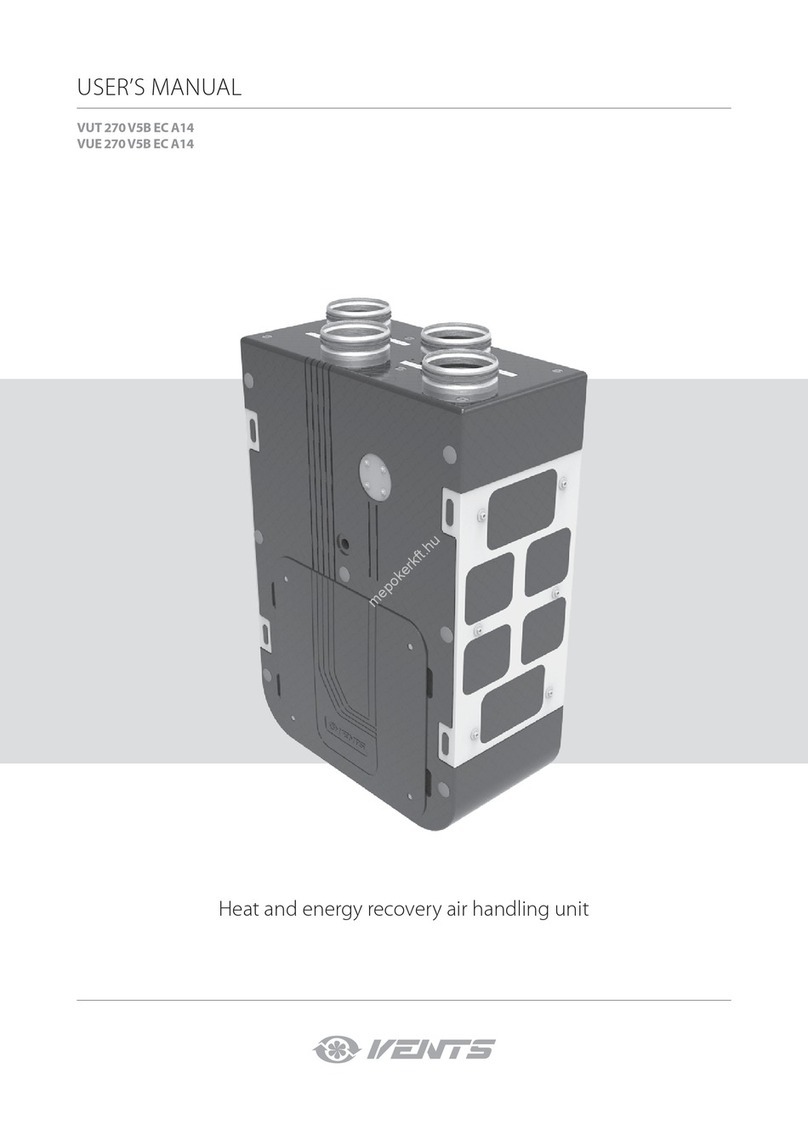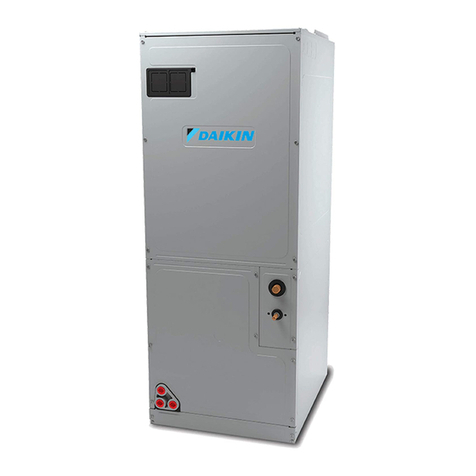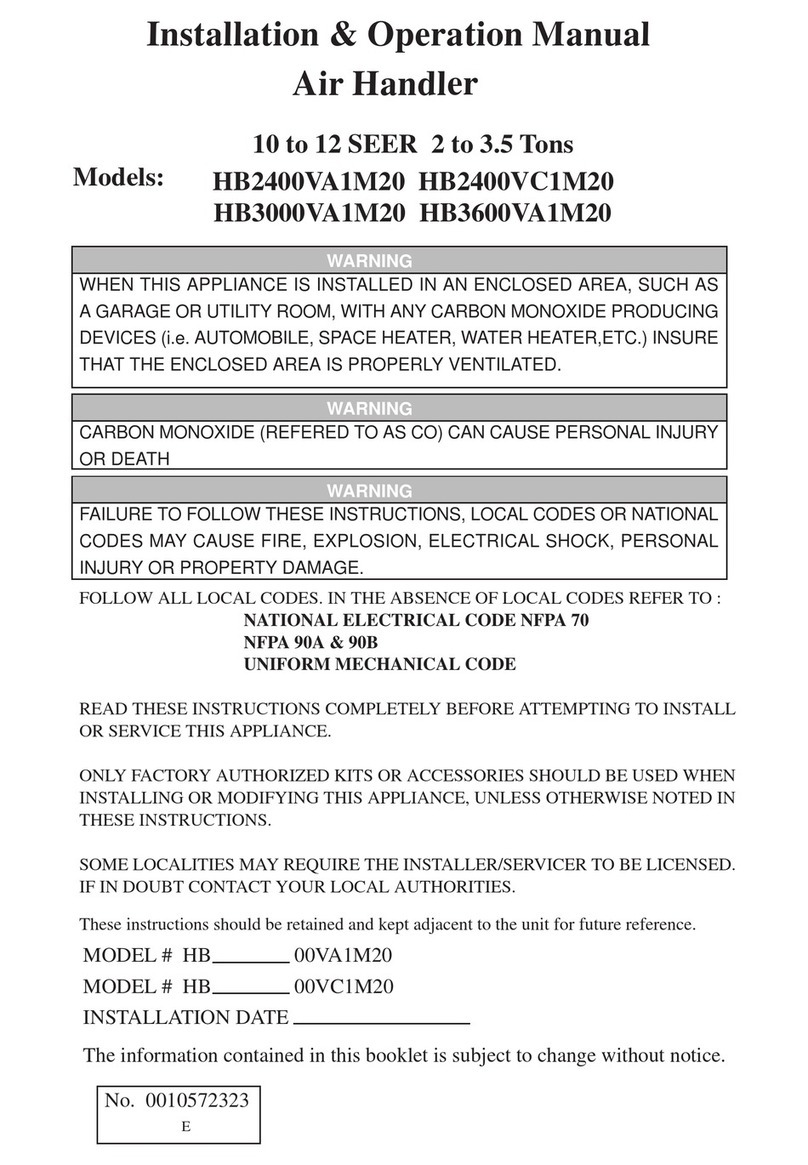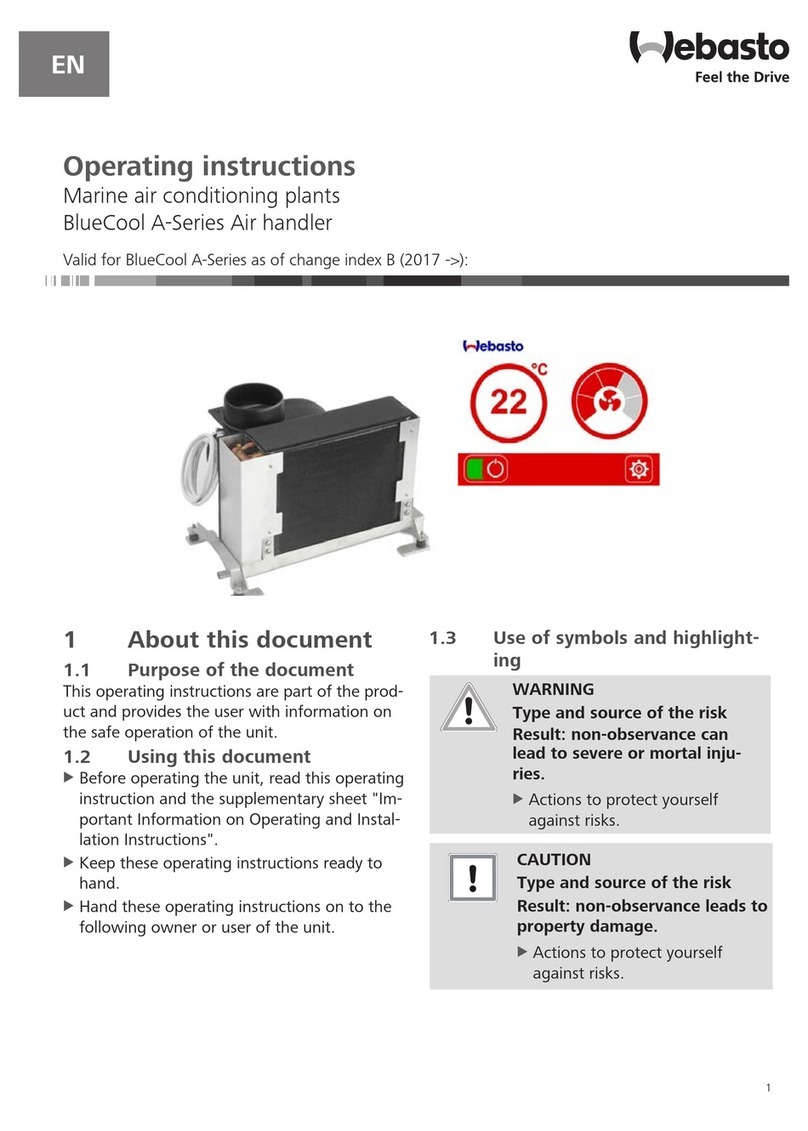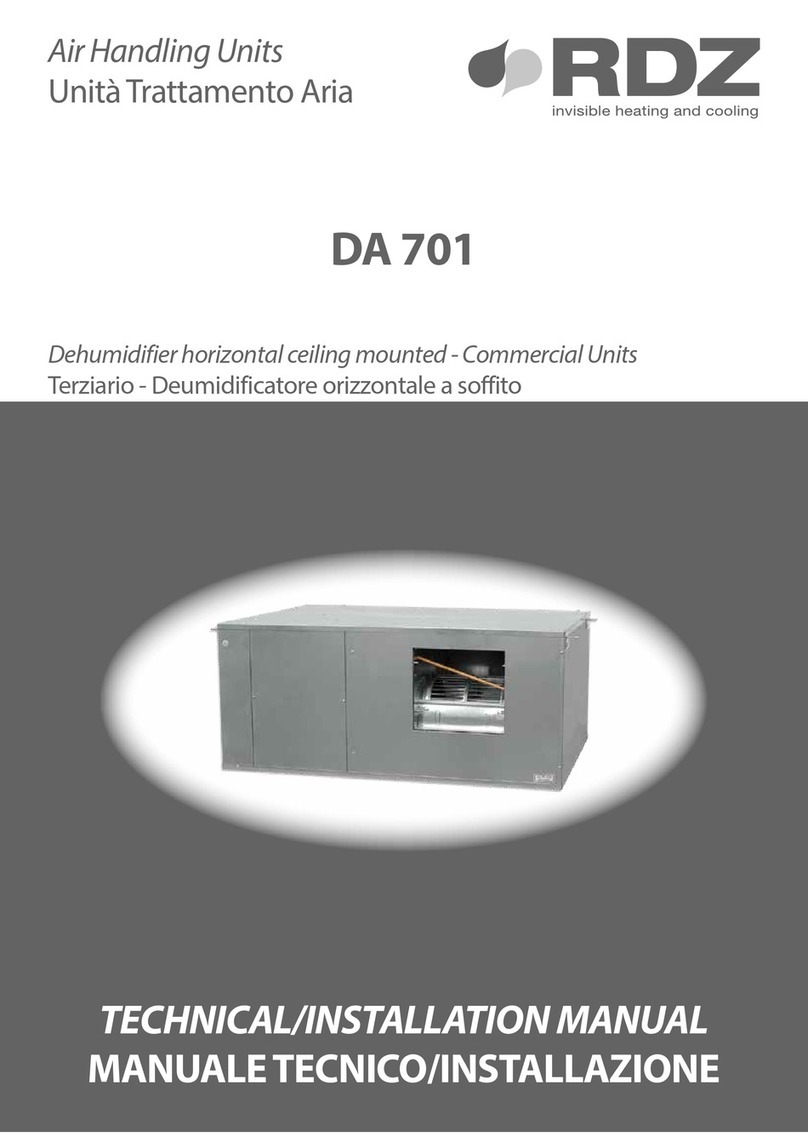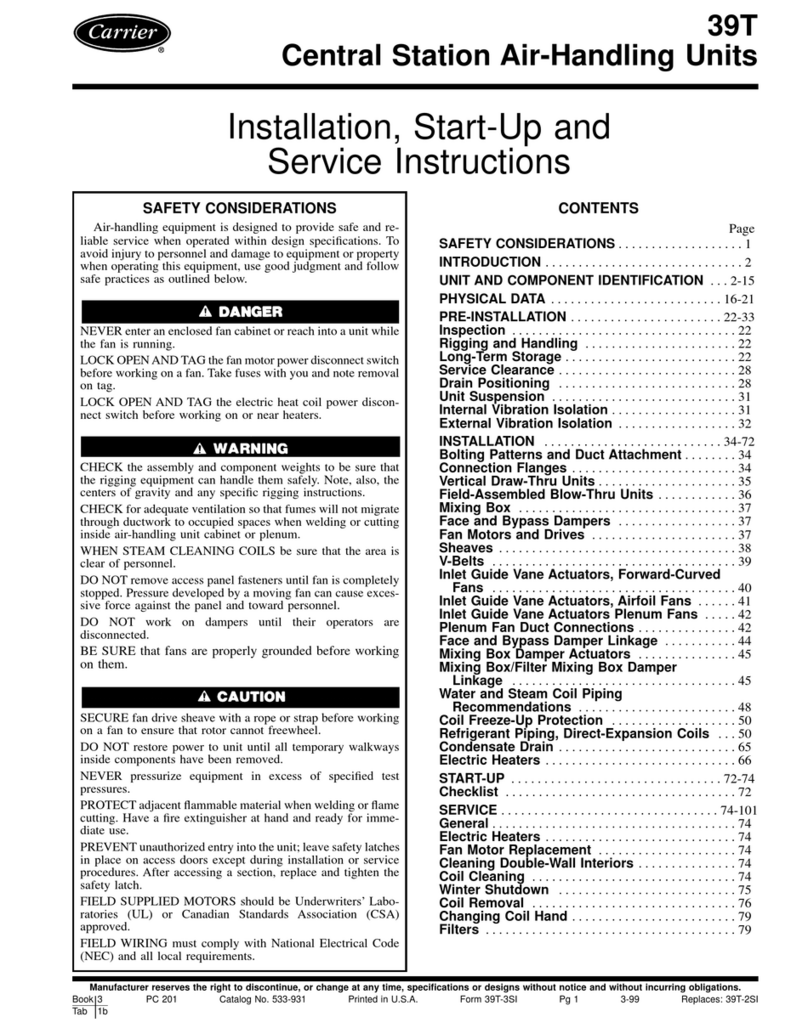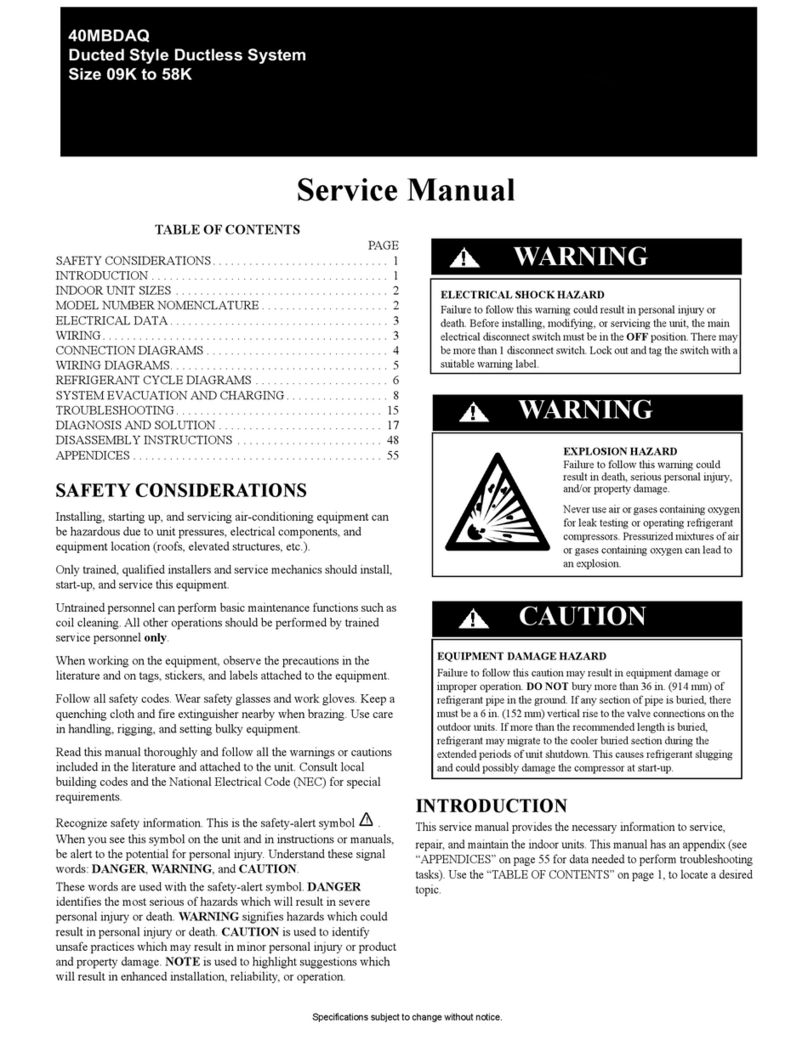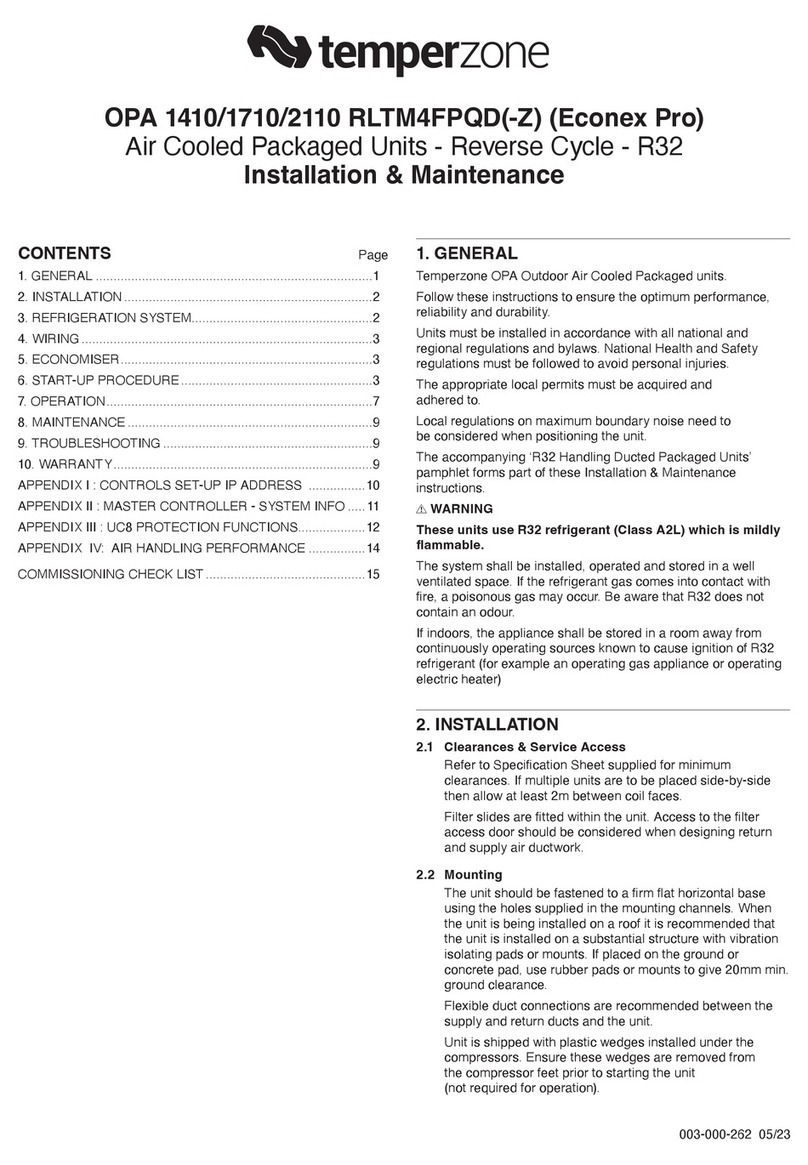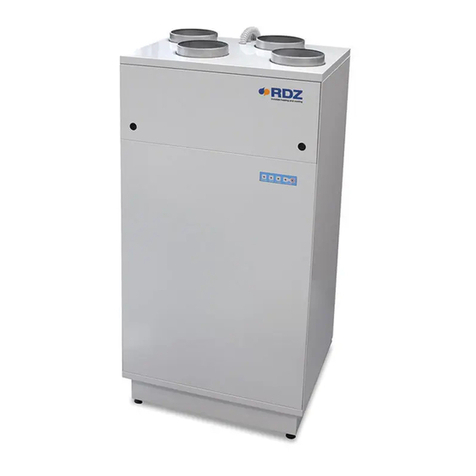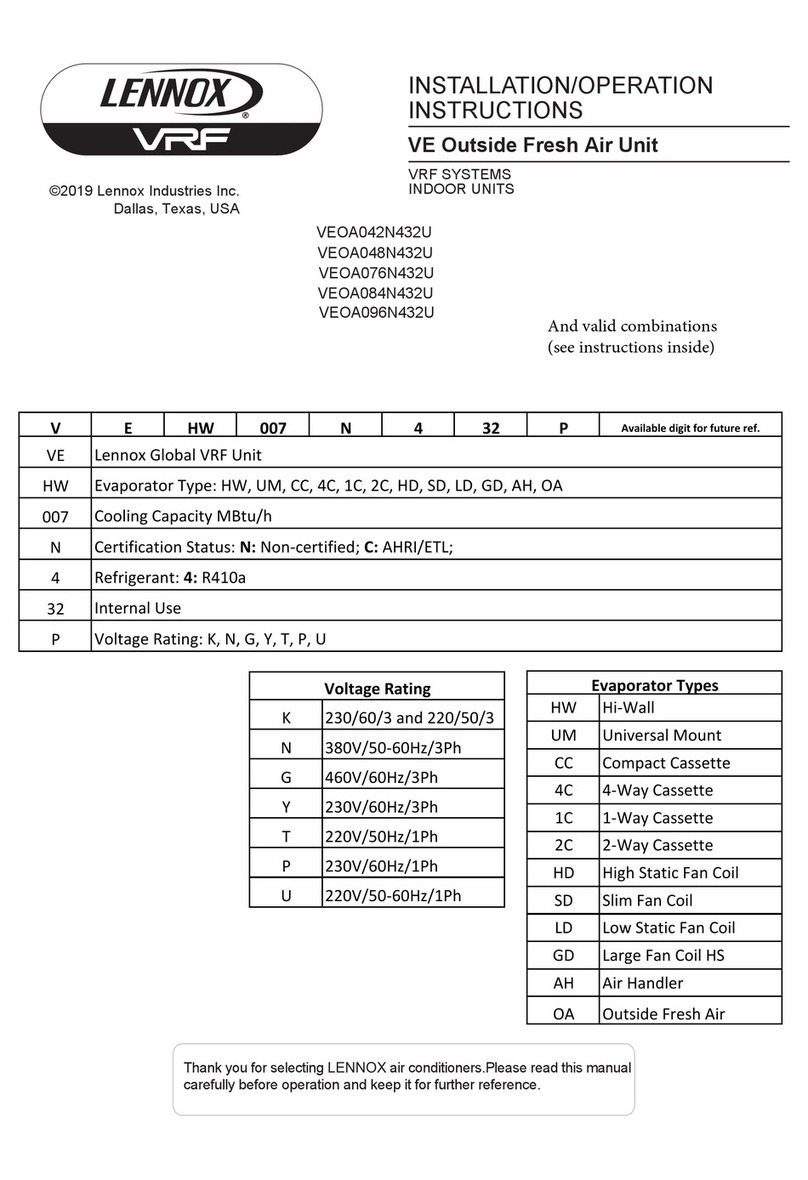
5
GENERAL
1�3 Recipients
User
Non-expert person able to operate the product in safe condi-
tions for people, for the product itself and for the environment,
to interpret an elementary diagnostic of faults and anomalous
operating conditions, to carry out simple adjustment, verica-
tion and maintenance.
Installer
Person skilled and qualied to position and connect hydrauli-
cally, electrically, etc. the unit to the plant: is responsible for han-
dling and correct installation as indicated in this manual and in
current national legislation. If the units have refrigeration con-
nections, the F-gas license is required..
Service
Expert person, qualied and authorized directly by the factory to
carry out all ordinary and extraordinary maintenance operations,
as well as any adjustment, control, repair and replacement of
parts that may become necessary during the life of the unit itself.
1�4 General warnings
This instruction manual forms an integral part of the device
and therefore must be carefully preserved and must ALWAYS
travel with it, even if you transfer the device to another owner
or relocate it to other premises.
If the manual gets damaged or lost, download a copy from
the website.
Read this manual carefully before proceeding with any ope-
ration and scrupulously follow what is described in the indi-
vidual chapters.
All the personnel in charge must be aware of the operations
and the dangers that may arise when starting all the installa-
tion operations of the unit.
Installations performed outside the warnings provided in this
manual and use of the appliance outside the prescribed tem-
perature limits will void the warranty.
These appliances have been designed for air conditioning /
heating and must be destined for this use compatibly with
their performance characteristics.
Any contractual and extra-contractual liability for dama-
ge caused to people, animals or things, due to installation,
adjustment and maintenance errors or improper use is exclu-
ded. All uses not expressly indicated in this manual are not
permitted.
Only qualied installer companies are authorised to install
the device. After having completed installation, the installer
will issue a declaration of conformity to the plant manager,
as required by the applicable standards and the guidelines
provided by contractor's instruction manual supplied with
the device.
Initial start-up and repair or maintenance operations must be
carried out by the Technical Assistance Center or by qualied
personnel according to the provisions of this booklet.
Do not modify or tamper with the appliance as this may cre-
ate dangerous situations.
It is always necessary to wear protective gloves and goggles
to perform interventions on the refrigerant side of the ap-
pliances..
During installation and/or maintenance operations, use su-
itable accident-prevention clothing and tools. The manu-
facturer declines all responsibility for failure to comply with
current safety and accident preventionand accident preven-
tion regulations in force.
Avoid contact: danger of burns.
To prevent any risk of electric shock, disconnect the main
switch before making electrical connections and any main-
tenance work on the equipment
In the event of liquid or oil spillage, set the system's main
switch to "o" and stop the ow in the reference circuit. In
the reference circuit. Call the authorised Technical Assistance
Centre or professionally qualied personnel as soon as possi-
ble and not intervene personally on the appliance.
If the appliance is not used for a long period of time, the fol-
lowing operations must be carried out:
• set the main system switch to "O"
• close the water taps
• if there is a danger of frost, ensure that the system has been
lled with antifreeze liquid, otherwise drain the system
In case of replacement of parts, use only original parts.
The manufacturer is not responsible for damages to persons
or property caused by failure to follow the instructions in this
manual.
The manufacturer reserves the right to make changes to its
models at any time in order to improve its products, without
prejudice to the essential characteristics described in this ma-
nual. The company is not obliged to add these modications
to machines previously manufactured, already delivered or
under construction.
This document is restricted in use to the terms of the law and
may not be copied or transferred to third parties without the
express authorization of the manufacturer.
1�5 Basic rules of security
Please keep in mind that the use of products powered by
electricity and water call for operators to comply with certain
essential safety rules:
It is forbidden to children and unassisted disabled persons to
use the device. The unit can be used by children over the age
of 8, and by people with reduced physical, sensoryor mental
